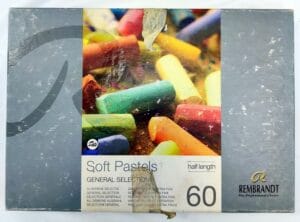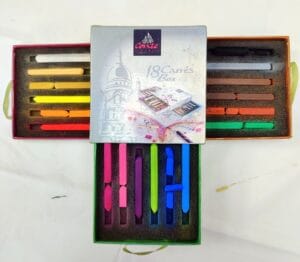Chalk pastels are soft, pigmented sticks of colour which are easy to blend and layer. I always advocate using the best supplies you can afford but with chalk pastel more than any other product that I have worked with, you really do get what you pay for. Also, I would suggest that you buy a set. If you are going for really great quality, you can often find sets in colour groups, such as skin tones or landscapes, to which you can add over time.

Cheap pastels are harder to work with. They crumble easily and have very little pigment. Had I not had someone take me under their wing when it came to learning how to use this medium, I would have given up before I had even started. You can buy some good quality student grade pastels, but you need to figure out if this is a medium for you and what your budget is. Check out one of my previous blogs (No. 13), which deals with what surfaces to use when pastel painting.
Let’s start with some basic techniques. First a “heads up”; you are going to get pigment everywhere. It is a messy medium but great fun to work with.
Start with lighter colours as a base and then layer darker colours on top. You can build up layers of pigments, which look interesting.
Next comes blending. Use your fingers for a gentle, soft blend but for something a bit more precise try using a blending stump. This is a stick of tightly rolled-up soft paper with two pointed ends. It is used to blend, smear and smudge pastels, charcoal and similar mediums.

You can also use another pastel stick to blend into a colour. Using the edge of the stick, you can create defined lines or, by using the side, you will cover a larger area more quickly which can help you to create texture. Hatching and cross hatching works well with this medium, too. My advice, as ever is to just play and explore.
Some pastel painters use a fixative between layers to prevent smudging and to seal the work in place. Personally, I find this dulls the colours, so I am careful where I use fixatives. Also, they can be very expensive and if you are just experimenting, try using hair spray as a cheaper alternative.
Chalk pastels are quite forgiving. You can rectify mistakes fairly easily, so don’t panic.
I will cover finishing and framing pastel paintings in a later blog.
NB, I do not get paid to endorse any people or brands mentioned in my blogs. If you enjoyed this post, please like, share and follow me. Sharing, liking and following raises the algorithms in my favour. Thank you for your support.
